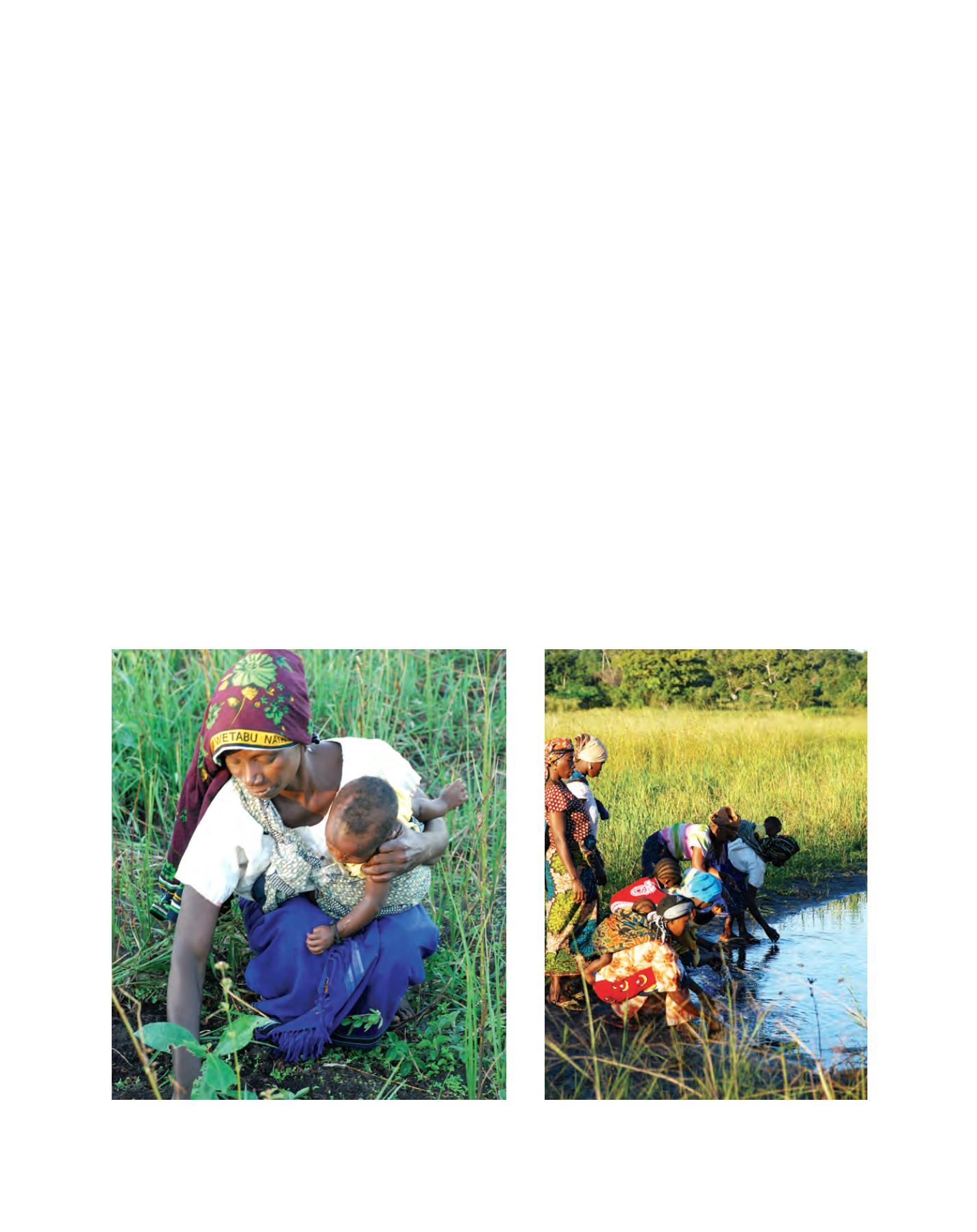

[
] 257
This has allowed us to deliver custom-made responses
that deal with the specificities of each of the diverse
landscapes.
Saving forests, saving water
To mention just one of many examples, in China, we
have been working in the Miyun watershed, which
supplies up to 80 per cent of the freshwater used in
Beijing. Worsening water shortages in Beijing have been
directly linked to the disappearance and degradation
of much of the original forest in the watershed. When
this was first recognized, the Government attempted to
resolve the problems by imposing a strict logging quota
but the forest quality and water supply continued to be
less than ideal.
The LLS project initiated by IUCN worked with local
authorities and communities to introduce a more inte-
grated form of landscape management and restoration,
which recognized the multiple needs and functions of
the watershed and brought together the many differ-
ent stakeholders. This included piloting a partial lifting
of the logging quota. The introduction of a new set of
forest management practices represented a shift from
a strict protective approach, towards more sustainable
resource use through active management by forest-
based communities.
This has resulted in a formal agreement that recog-
nizes different forest management and forest use
regimes, merging the technical information held by
companies to take on the challenge of forest landscape restora-
tion. This concluded with an extremely significant outcome: a
joint commitment to restore 150 million hectares of deforested
and degraded landscapes by 2020. That is approximately equiva-
lent to an area the size of Mongolia, with phenomenal benefits to
biodiversity and livelihoods.
IUCN has estimated that restoration on that scale will be worth
US$85 billion per year to local and national economies. Highlighting
the worth of ecosystems and the services they provide in this way
has also been a part of other work IUCN has been doing to come
to a better understanding of the value of forests at each level of the
global economy.
One such programme of work in this regard, which has also
generated valuable new knowledge on the spatial variance of poverty
and forest dependence in forest-adjacent communities, has been our
Landscapes and Livelihoods Strategy (LLS).
1
Already in place for
five years and ending its first phase in 2011, LLS has been improv-
ing sustainable management of natural resources – and the lives of
people who depend on them – in more than 20 countries across
Africa, Asia and Latin America.
On a global level, we have learned from LLS that the direct
benefits from forests are worth around US$130 billion every
year: roughly equivalent to annual official development assist-
ance worldwide. We have also discovered that forest reliance
globally varies between about 25 per cent and 40 per cent of total
annual income.
LLS builds on the ecosystem approach in taking a ‘landscape’
view, which allows us to look at and manage forests as part of a
broader and more complex ecological and socio-economic system.
Mother and baby planting seedling to restore forested area near precious water
sources, Tanzania
Women drinking at water source in forest landscape, Tanzania.
Safe water supplies result from forest protection
Image: IUCN/Daniel Shaw
Image: IUCN/Daniel Shaw
















